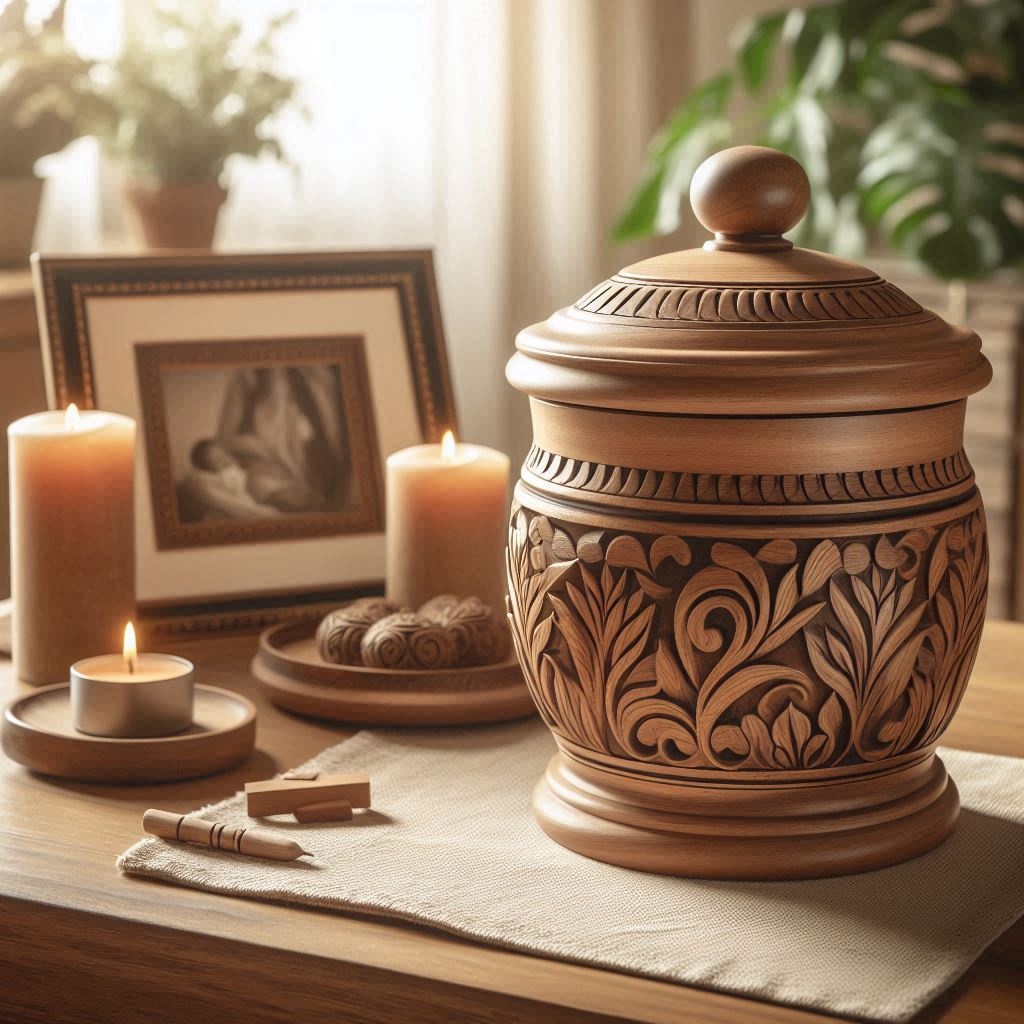
What is The Process of Cremation? - A Step-By-Step Guide of Cremation.
Share
How Does Cremation Work? A Complete Guide to the Process of Cremation
Cremation is an increasingly popular choice for honouring loved ones, offering both flexibility and dignity. But many people still wonder—how does cremation work, and what should be done with the ashes afterward? Whether you’re planning ahead or navigating a recent loss, this guide explains the cremation process in simple terms, while helping you choose the right cremation urn—especially if you're considering a handcrafted wooden urn that reflects your loved one’s personality or values.
What Happens During the Cremation Process?
Cremation involves using high heat to reduce the body to bone fragments, which are then processed into ash. The entire procedure typically takes two to three hours and occurs at a licensed crematory.
Step-by-Step Process:
- Identification and Authorization: Legal documents are completed, and the body is identified.
- Placement in a Cremation Container: A combustible container, often made of cardboard or wood, is used.
- Cremation: The container is placed in a cremation chamber where intense heat (1400–1800°F) reduces the body.
- Ash Processing: Bone fragments are cooled, then ground into a fine, uniform powder.
- Transfer to an Urn: The ashes—known as cremated remains—are placed into a temporary container or a chosen cremation urn.
Throughout, the process is conducted with great care and respect, ensuring that only the remains of your loved one are returned.
How Do Cremation Urns Work?
Cremation urns are specially designed containers used to hold cremated remains. They can be functional, decorative, or both. The right urn offers not just storage, but a way to celebrate and remember someone’s life.

Common Types of Urns:
- Standard display urns: Ideal for keeping at home.
- Burial urns: Durable enough for ground burial.
- Scattering urns: Easy to open and use for dispersing ashes.
- Keepsake urns: Smaller options for sharing ashes among loved ones.
Among all types, wooden cremation urns stand out for their warmth, customizability, and natural beauty. Whether you prefer a classic design or a themed tribute, wood offers timeless appeal.
What to Do With a Cremation Urn?
Once you receive the ashes, you’ll need to decide what to do with them. Families often choose to:
- Keep the urn at home as a personal memorial.
- Bury the urn in a cemetery plot or urn garden.
- Place the urn in a columbarium niche.
- Scatter the ashes in a meaningful location.
- Divide the ashes among family members using keepsake urns.
If you’re keeping the urn at home, consider a style that complements your space and tells a story. Handcrafted wooden urns can be customized to reflect everything from spirituality to military service.
Where Does the Urn Go After Cremation?
After cremation, the ashes are returned in a basic container unless you've selected a permanent urn. The urn may then be:
- Displayed in a home memorial space.
- Interred in a burial plot or columbarium.
- Held during a scattering ceremony.
- Converted into part of memorial jewellery or keepsake items.
Many families choose urns with lasting presence—such as solid wood urns crafted from cherry, walnut, oak, or maple—due to their warm, inviting look and personalization options.
Are Aluminium Urns Good or Is Wood Better?
Aluminium urns are affordable, lightweight, and corrosion-resistant. However, many prefer the craftsmanship and personality of wooden urns. Here’s why wood often stands out:
- Natural grain and warmth
- Eco-friendly materials
- Easier to customize or engrave
- Themed designs to match a person’s passions
Whether you’re honouring a veteran with a military-themed wooden urn, celebrating a life of faith with a religious urn, or remembering a nature lover with a tree or landscape design, wood provides both form and function.
What Is the Best Material for an Urn?
The best material depends on your intention. Here's how common materials compare:
| Material | Pros | Best Use |
|---|---|---|
| Wood | Warm, elegant, customizable | Home display, indoor burial |
| Metal (Aluminium or Brass) | Durable, resistant to wear | Burial, columbarium placement |
| Ceramic | Artistic and decorative | Indoor display only |
| Biodegradable | Eco-friendly, breaks down over time | Green burials, scattering |
| Stone or Marble | Heavy and long-lasting |
Permanent burial or mausoleums |
For a lasting, heartfelt tribute, wooden cremation urns are a top choice. Their ability to be customized makes them perfect for celebrating individuality.
What Type of Urn Lasts the Longest?
The most durable urns are made from metals or stone, but hardwood urns such as oak, walnut, and cherry also last for decades when cared for indoors. With proper storage away from moisture and direct sunlight, a wooden urn can become a family heirloom.
Tip: Many of our customers choose theme-based wooden urns designed to represent a life well-lived. Popular options include:
Nature-themed urns : With carvings of trees, mountains, or wildlife
Military urns : Honouring service and sacrifice with engraved flags or emblems
Religious urns : Featuring crosses, doves, or other sacred symbols
Hobby urns : Reflecting passions like fishing, music, or sports
Phoenix urns: Rebirth & Eternal
Dinosaur urns: Unique and Enthusiastic
Final Thoughts: A Tribute That Lasts
- Cremation is not just a process—it’s a step toward healing, remembrance, and honouring a life. Choosing the right cremation urn can bring comfort and meaning in a difficult time. Whether you plan to keep the urn at home, bury it, or share it with loved ones, selecting a piece that reflects the spirit of the person is essential.
- Explore our full line of handcrafted wooden cremation urns, including military, nature, and hobby-themed designs, made to celebrate individuality and legacy.
If you’d like more help with memorial planning or understanding cremation, check out our other guides:
